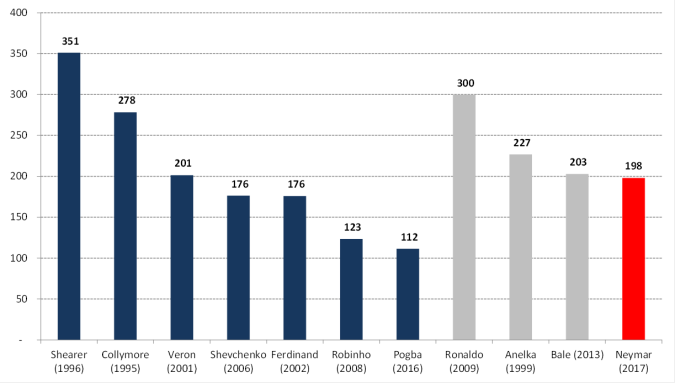
Usually my football postings try at least nominally to make the link with economics. But with the transfer deadline approaching, I feel like offering up a more qualitative analysis of where Pochettino needs to improve the squad. These are not specifics, but rather some broad principles.
So what is it that Spurs need?
1. A first XV (not a first XI)
I find it staggering the number of commentators who still get caught up on the idea that it is difficult for us to recruit because we cannot improve much on our supposed “first team”. As I have written before, whatever the level of your club and corresponding objectives, there is a basic threshold for quality. In our case, as potential title challengers, that is of the very highest level. Once that level has been determined, any squad will need at least 15 or so players who are of the required standard. They must all be “first team” players, even though only 11 play on the day. This is so basic that I just do not understand why it is still discussed.
For Tottenham in their current tactical style, this means:
- 2 strikers
- 3-4 attacking midfielders
- 3 central / defensive midfielders
- 3-4 central defenders
Only the goalkeeper can be expected to be a single regular and an understudy. Full-backs and wing-backs (the latter becoming one of the most high profile and specialized role across Europe) are perhaps also forgiven due to their relatively specialist nature, though the Kyle Walker / Kieran Trippier combination was really the very least we needed in terms of quality.
Some flexibility helps alleviate this, for instance Eric Dier’s switching between midfield and defence. But if you add it all up, we are talking about a “first team” of between 14 – 16 players, ideally a few more. I would say that we currently have about 11, excluding Davies and Trippier but including Son and Lamela. That is not enough for a title challenge.
2. Game changers
In the two recent defeats against Chelsea, much was made of the strength of the respective squads, which is true as far as it goes. But I have noticed that Poch also does not really have players who can really change things against the run of play “out of nothing”. Dele is the possible exception, Eriksen inconsistent. The point is that these players can all play well – but only if the team plays well. A game changer is a player who, like Hazard or the much-underestimated Willian at Chelsea, can pull things out when the team is playing poorly.
Our lack of this ability is why we seem to win relatively few games when we are not playing well – Crystal Palace away was one of the few occasions last season that I can remember. But the problem is: game changers are typically not great team players. The whole point is that they are egotistical prima donnas who pull something out of the bag precisely because at that moment, they are ignoring their team mates’ performances and just doing what they want. If the team is functioning, that’s wasteful selfishness; if the team is not functioning, it can be a life-saver. But game-changers are not Poch players.
3. Bastards
Lastly, we have the ongoing issue of our relative naivety at controlling matches (something which has reared its head this season against Burnley and arguably against Chelsea too). There is a valid accusation that Poch demonstrates a lack of stylistic flexibility, namely sticking at all times to the pressing style, but at this point last season he was also accused of tactical rigidity and ended up coming up with the 3-4-2-1 as a “Plan B”, so perhaps he just needs time to work on a more Mourinho-esque counter-attacking style.
But what he lacks in the squad are real bastards. People with experience and the skills to wind opponents up in big games. Chelsea is once again a great example of a squad almost any of whom would be bottled round the back of the pub just because they are annoying. Spurs, on the other hand, are not only too naïve, but too “nice”. There are glimpses of something more edgy from Rose and Dembele on occasion, and Dele is beginning to learn how to wind people up. But really, we have not had a really aggressive little bastard since Edgar Davids – it is the very definition of our historic “soft underbelly”.
Again, though, I suspect that bastards really are not considered suitable for Poch’s teams. One reason our squad is so nice is that they are so young, and have been growing up as Poch’s children effectively. How do you generate a Roy Keane or John Terry in that situation? Almost all the great “nearly” sides, from Newcastle in 1995 to Liverpool in 2013 have shown this weakness. We look set to join them.
*******
So with two days left, what are some answers? Well strengthening the wing-backs will be crucial – Aurier and possibly Sessignon would be good news (or eventually a Rose for Shaw swap). Adding more creative firepower would be great. But really we also need a gritty central man who has a bit of a temper. I have said it before and will say it again: perhaps it is time to reinvent Sissoko as that man. He showed a great elbow last year at Bournemouth!





